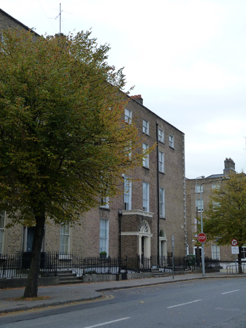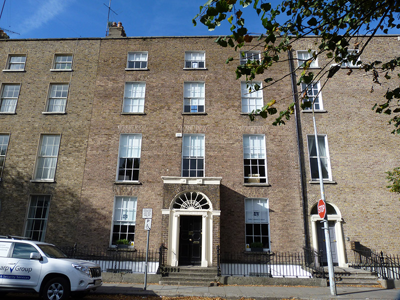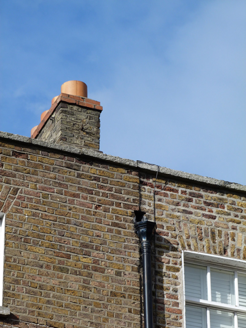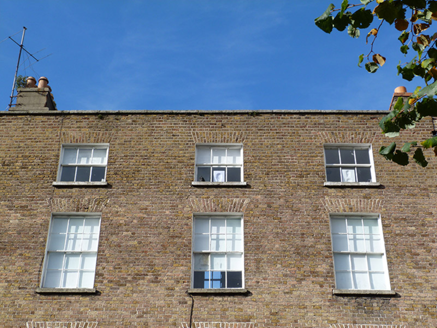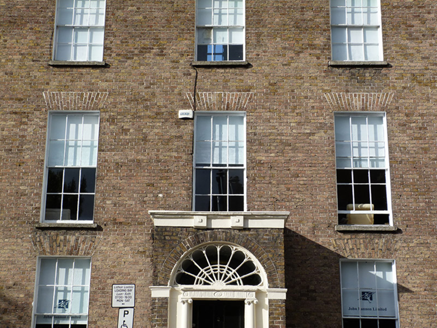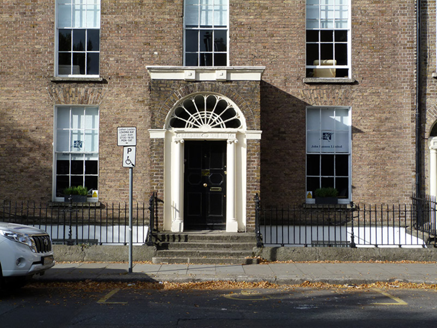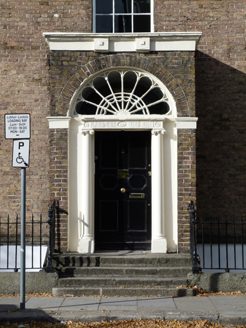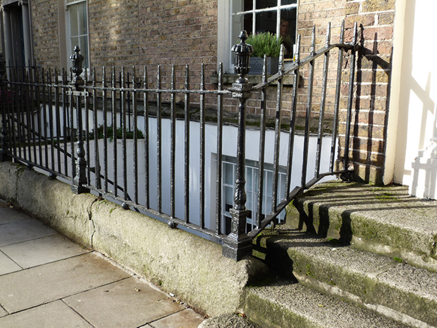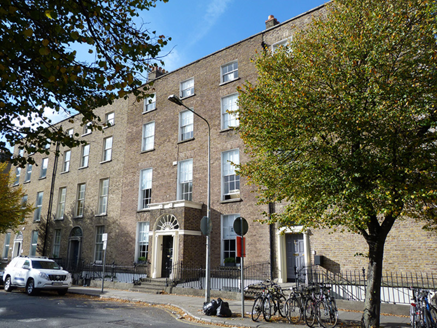Survey Data
Reg No
50920290
Rating
Regional
Categories of Special Interest
Architectural, Artistic
Original Use
House
In Use As
Office
Date
1800 - 1840
Coordinates
316249, 232964
Date Recorded
16/10/2015
Date Updated
--/--/--
Description
Terraced three-bay, four-storey over basement house, built c. 1820, with projecting porch to front (south) elevation. Now in use as offices. Pitched slate roof, hidden behind brick parapet with granite coping, having rendered chimneystacks with clay pots to west end and brick chimneystack and cast-iron rainwater goods to east end. Brown brick walls laid in Flemish bond over granite plinth course and painted lined-and-ruled rendered walls to basement to front elevation. Brown brick walls laid in Flemish bond to rear (north) elevation. Square-headed window openings with granite sills and rendered reveals, with six-over-six or pane timber sliding sash windows to ground, first and second floors and three-over-three pane timber sliding sash windows to third floor; square-headed window openings with painted reveals, granite sills and timber eight-over-eight pane sliding sash windows to basement to front elevation. Square-headed window openings with painted masonry sills and three-over-three pane or four-over-four pane timber sliding sash windows to rear elevation. Projecting flat-roofed porch with render cornice over brown brick walls laid in Flemish bond with rendered platband to impost level. Round-headed door opening with rendered reveals, Ionic columns supporting fluted frieze and cornice having petal fanlight and timber panelled door. Granite platform and granite steps flanked by wrought-iron railings and cast-iron corner posts on a carved granite plinth, continuing to east and west to enclose basement area. Located on north side of Hatch Street.
Appraisal
A typical late Georgian house, the only house in the street with a projecting porch, its restrained classical façade is ornamented by the cast-iron work railings. The Ionic doorcase completed with petal fanlight represents the work of a skilled artisan and contributes to the artistic character of the building. Located within the Fitzwilliam Estate, which covered much of the south-east of the city, Hatch Street is named for John Hatch who leased development land from the Leeson family. While the street was approved by the Wide Street Commission in 1791, subsequent development was slow, only occurring the first half of the nineteenth century. The eastern end of the street had been fully developed by the 1830s and the townhouses appear on the first edition Ordnance survey map.
